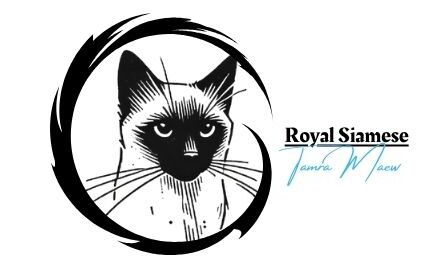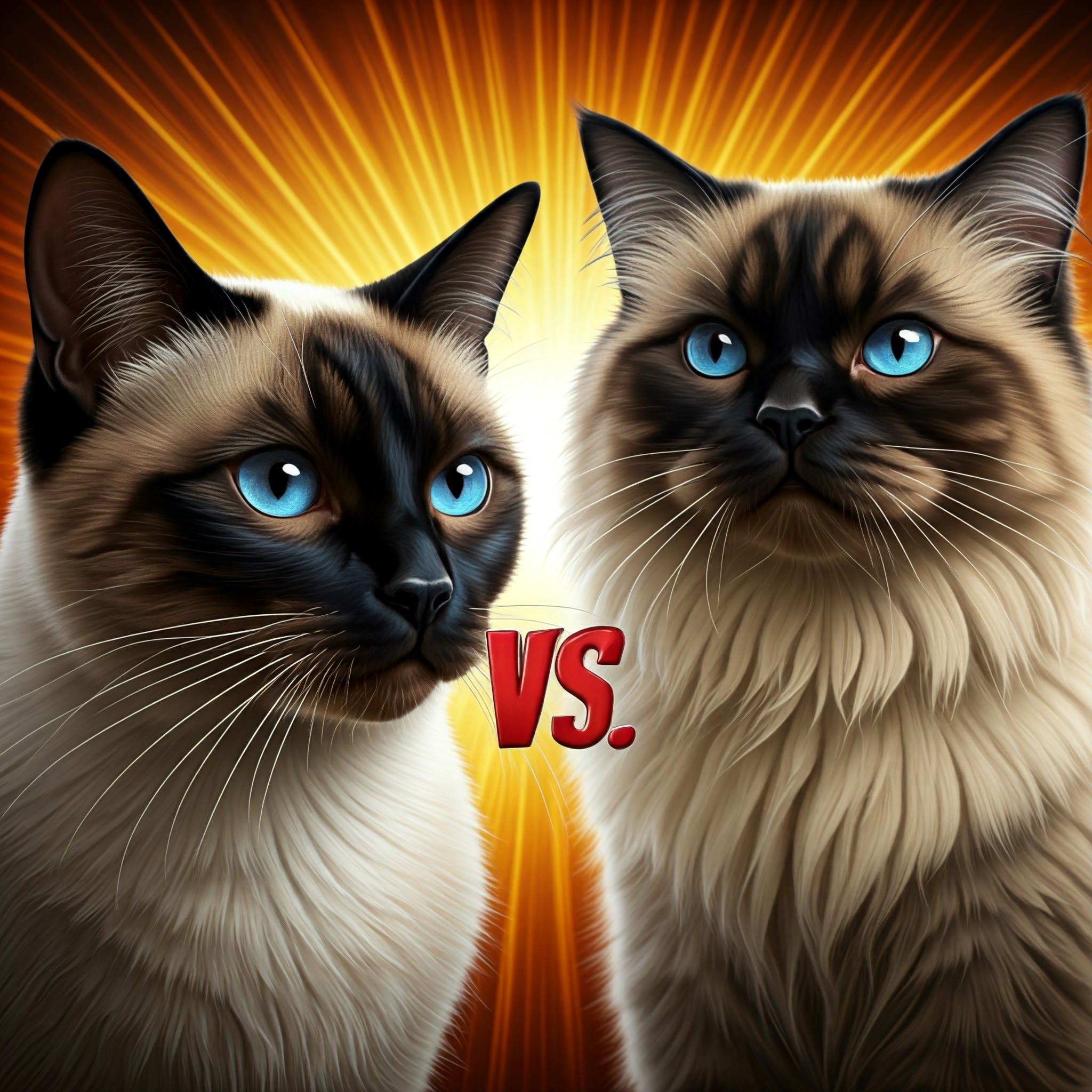Imagine two super cool cats — one is sleek and chatty, and the other is fluffy and calm with the softest fur ever! Welcome to the Siamese vs Himalayan cat breeds. These two feline friends might both look like they belong in a royal cat palace, but they have some pretty fun differences! One loves to talk (a LOT), while the other prefers quiet cuddles. So, how do you choose between these two furry pals? Let’s dive into the magical world of Siamese and Himalayan cats to discover which one is the perfect pet for you! Get ready for a paws-itively awesome adventure!
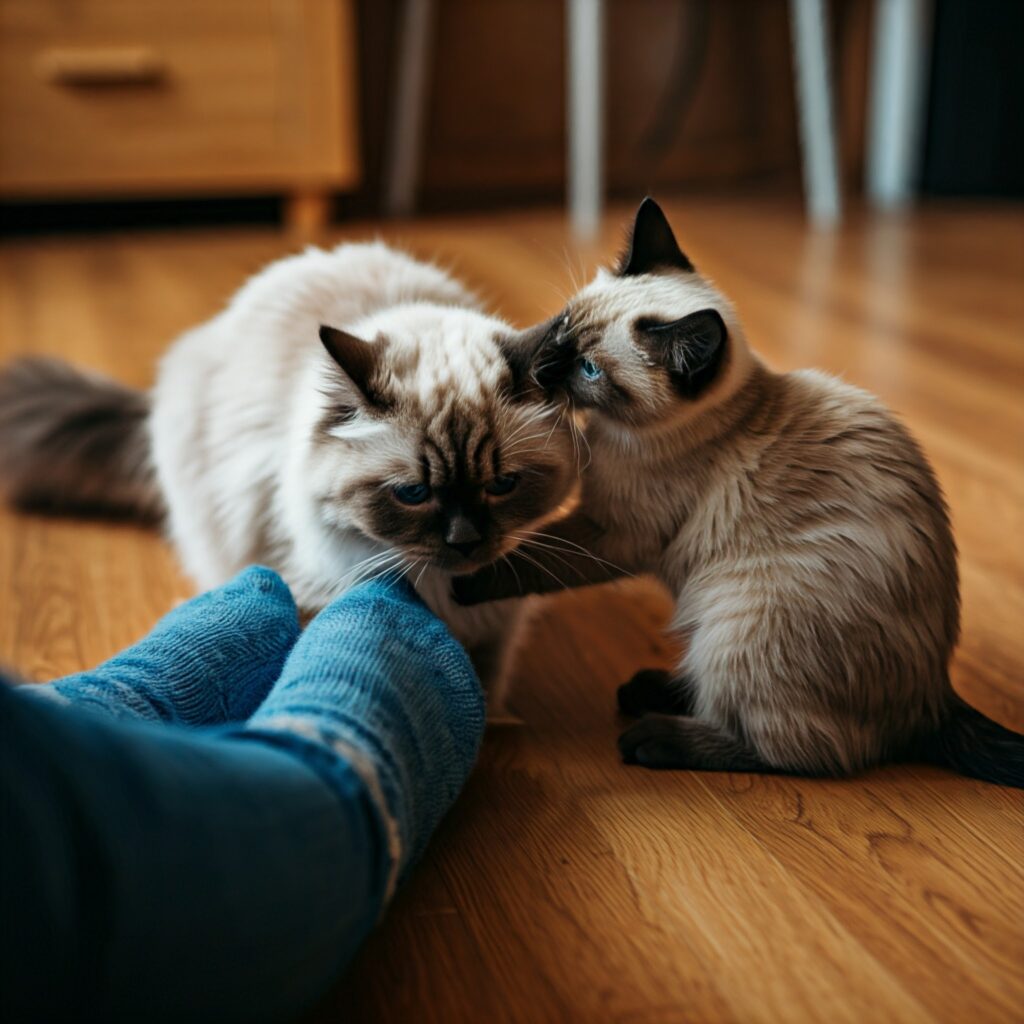
Table of Contents
Introduction to Siamese and Himalayan Cats
Siamese and Himalayan cats are two popular and beloved cat breeds known for their striking appearance and charming personalities. The Siamese breed originated in Thailand, while the Himalayan breed was developed by crossing Siamese cats with Persian cats. Both breeds are highly intelligent, affectionate, and social, making them wonderful family pets. In this article, we will delve into the history, characteristics, and needs of Siamese and Himalayan cats, helping you decide which breed is right for you.
History and Origin
The Siamese breed has a rich history dating back to the 14th century in Thailand, where they were highly valued as temple cats. They were first introduced to the West in the late 19th century and quickly gained popularity for their striking blue eyes and pointy ears. The Himalayan breed, on the other hand, was developed in the 1950s by crossing Siamese cats with Persian cats to create a cat with the Siamese’s pointy ears and blue eyes, but with a longer, fluffier coat. The Cat Fanciers Association recognized the Himalayan as a distinct breed in 1957.
Physical Appearance and Blue Eyes: Siamese vs Himalayan Cats
When it comes to looks, both the Siamese and the Himalayan are unique breed undeniably striking, but they differ in several key ways.
Siamese cats are known for their sleek, slender bodies, which make them look like graceful little panthers! Their short coat, with the iconic “color-point” pattern, creates a striking contrast between their dark ears, face, paws, and tail and the lighter shade of their bodies. This unique color pattern gives them an elegant, almost royal appearance. With their long, lithe frame and almond-shaped, bright blue eyes, Siamese cats always seem alert and ready for action. Their large, pointed ears add to their distinct, exotic look, giving them a sophisticated charm.
Fun fact: Siamese cats were once considered sacred temple cats in Thailand (formerly Siam), where they were believed to bring good luck and protection to their owners! Read our amazing siamese breed history for more.
On the other hand, Himalayan cats couldn’t look more different. They have a rounder, more adorable face, with a flatter nose that’s reminiscent of the Persian breed. Their big, expressive eyes are a standout feature, giving them a gentle, sweet look. Himalayans are best known for their luxurious, long fur that feels like velvet to the touch. This soft coat is part of their charm, but it does require a bit more effort when it comes to grooming. Unlike their sleek Siamese cousins, Himalayan cats have a more solid, stocky build, with a medium to large body that makes them appear very sturdy.
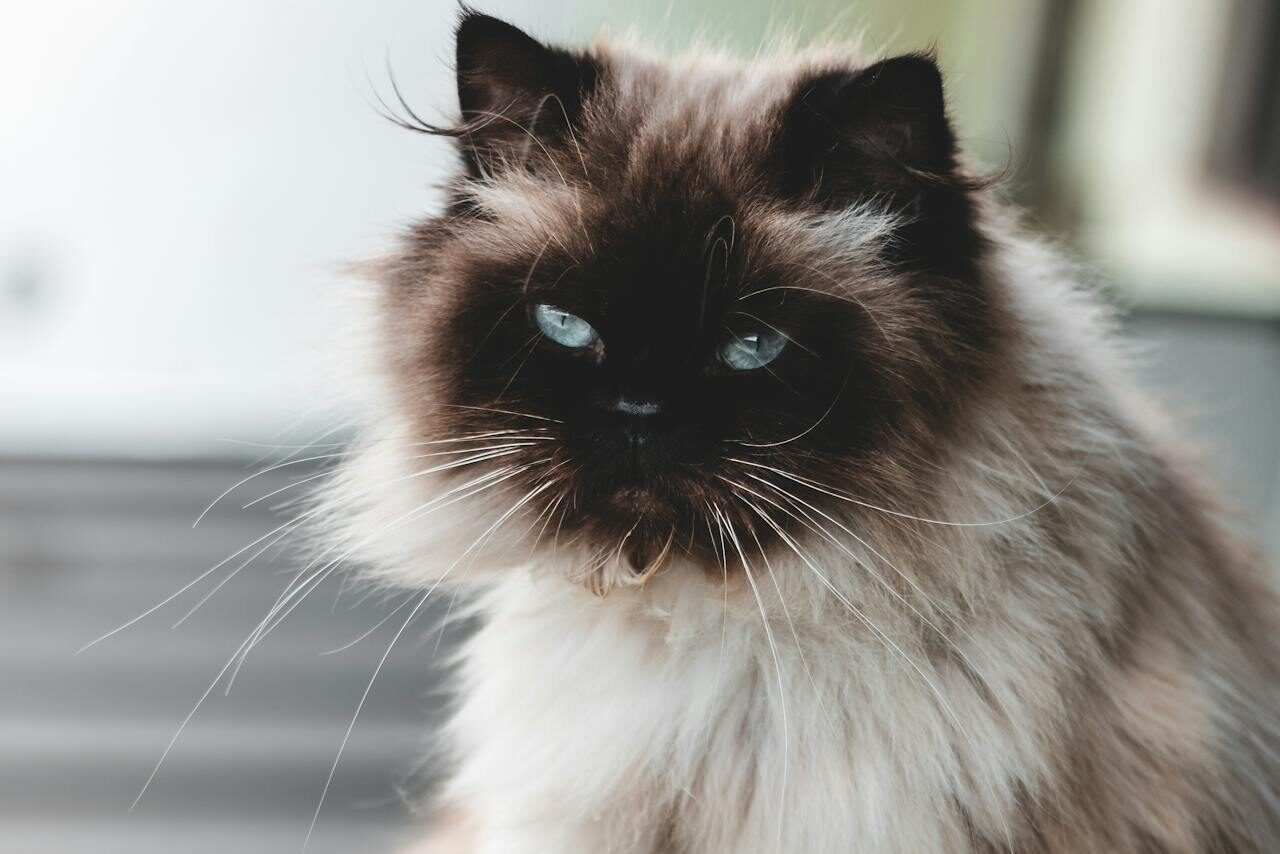
Reviewing Siamese vs Himalayan cats, the Himalayan also share in the color-point pattern, where the darker fur on the ears, face, paws slender legs, and tail contrasts with the lighter body color. However, the difference in their coats — short and sleek versus long and fluffy — is easy to spot!
These two breeds may share similar color patterns pointed markings, but their overall appearance and grooming needs make them very different. Whether you prefer the elegance of the short haired Siamese or the fluffy cuddles of the Himalayan, both are sure to turn heads with their beauty!
Temperament and Personality: Siamese vs Himalayan Cats
The personalities of Siamese kittens and Himalayan cats are as different as their physical traits.
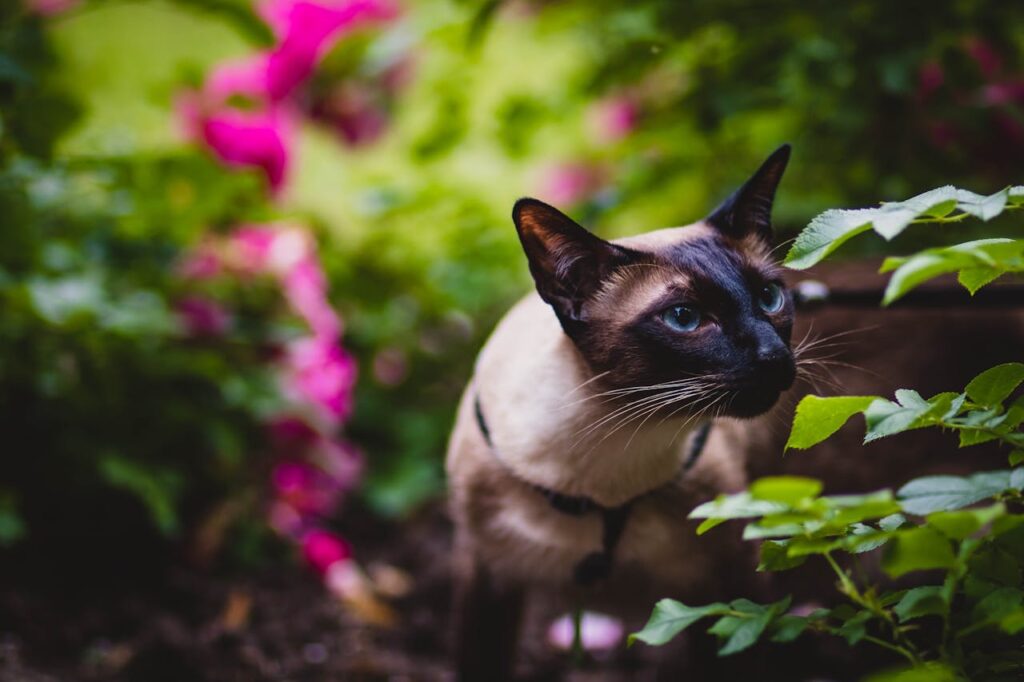
• Siamese vs himalayan are famous for being incredibly vocal, social, and active. These cats are highly affectionate, often following their owners around the house and seeking attention. They tend to be playful, intelligent, and require lots of mental stimulation. If you’re looking for an interactive companion, a Siamese is the perfect fit!

• Himalayan cats, in contrast, are known for their calm and affectionate nature. While they still enjoy being with their owners, they are less demanding than Siamese cats and tend to prefer peace be quieter. These cats are generally more laid-back, preferring to lounge around the house and enjoy gentle petting sessions. If you’re looking for a relaxed, less vocal cat, a Himalayan may be the way to go.
Care and Daily Grooming Needs: Siamese vs Himalayan Cats
Taking care of your cat involves more than just feeding them — grooming is a big part of maintaining their health and beauty.
• Siamese vs himalayan have short fur, making them natural breed relatively low-maintenance when it comes to grooming. Regular brushing will help minimize shedding, but they don’t require extensive care like their long-haired counterparts.
• Himalayan cats, with their long, luxurious fur, need regular grooming to prevent matting and tangles. It’s important to brush them daily to keep their coat in top condition. Regular brushing helps keep their coats healthy and shiny. Bathing might also be necessary every few weeks, especially if they get dirt in their fur. Brushing also helps remove loose hair. If you’re prepared for a bit more work, their fluffy, luxurious coats are certainly worth the effort!
Nutrition and Diet
Both Siamese and Himalayan cats are carnivores and require a diet rich in protein and fat from animal sources. They are picky eaters and may have difficulty digesting certain ingredients, so it’s essential to feed them high-quality cat food that meets their nutritional needs. A balanced diet should include meat or fish as the primary ingredient, with minimal carbohydrates and no fillers or by-products. Himalayan cats, in particular, may benefit from a grain-free diet to reduce the risk of hairballs and digestive issues.
Training and Socialization
Siamese and Himalayan cats are highly intelligent and respond well to training and socialization. They are naturally curious and love to interact with their human family members, making them ideal for families with children. However, they can be demanding and require attention and stimulation to prevent boredom and destructive behavior. Early socialization and training are crucial to develop good behavior and prevent behavioral problems. Positive reinforcement techniques, such as clicker training, can be effective in teaching your cat to perform tricks and obey commands.
Family and Pet Compatibility
Both Siamese and Himalayan cats make wonderful family pets, but they have different personalities and needs. Siamese cats are more outgoing and demanding, requiring attention and interaction from their human family members. They are generally compatible with other cats and pets, but may be too energetic for very young children. Himalayan cats, on the other hand, are more laid-back and docile, making them ideal for families with older children or for people who want a low-maintenance pet. They are generally compatible with other pets, but may require more attention and grooming due to their long coat.
Health Considerations: Siamese vs Himalayan Cats
When it comes to health issues, both the Siamese and the Himalayan breeds have specific concerns that potential owners should be aware of.
• Siamese cats are generally healthy but are prone to certain genetic conditions like heart disease (hypertrophic cardiomyopathy) and respiratory issues due to their narrow faces. Regular vet check-ups are recommended to catch any early signs of illness.
• Himalayan cats have some unique health risks as well, especially related to their brachycephalic (flat) faces. This can lead to difficulty breathing and other respiratory concerns. They also tend to be more prone to kidney problems, so keeping an eye on their renal health is crucial.
Maintaining regular vet visits and a proper diet for either breed can help prevent or manage many of these health conditions.
Lifespan and General Care: Siamese vs Himalayan Cats
The lifespan of both breeds is an important consideration when choosing a cat.
• Siamese vs himalayan cats typically live longer, with an average lifespan of 15 to 20 years. With good care and regular veterinary visits, many Siamese cats live well into their senior years.
• Himalayan cats generally have a shorter lifespan of 12 to 16 years, but they can still live a full, happy life with the right care. Himalayan cats inherit traits from their Persian relatives, which can affect their health and grooming needs. Due to their grooming and health needs, it’s important to provide them with consistent maintenance and attention.
Both breeds lap cats require a balanced diet and plenty of exercise, especially Siamese cats, who are more active and love to play.
Which Breed is Right for You as a Wonderful Family Pet?
Honestly this can be a fairly large decision. Are you allergic? Do you have kids? a pet friendly Are you sure you’ve made a decision that will ultimately be a 12-20 year commitment? Deciding between a Siamese and a Himalayan cat, it’s important to consider your lifestyle and preferences.
• If you want an interactive, social, and highly vocal cat who thrives on attention and mental stimulation, the Siamese cat is likely your best match. It is also a wonderful family pet, known for its affectionate and playful nature. It was for me and I loved that cat, and she loved me.
• If you’re looking for a quieter, more relaxed cat with a gentle personality and you’re prepared to spend time grooming, the Himalayan cat might be the right fit for your home. Admittedly I have also had a Himalayan and they are such lovely animals. They will sleep on your chest and wake you up in the morning, as if a best friend.
Both breeds make excellent pets, but understanding popular breeds and their unique needs and characteristics will help you make the best choice for your living situation and family. Make the best decision, yes, for your family, but also consider the life of the cat. Ultimately if there is any chance it won’t end up being you favorite thing to see when you come home maybe look the other way.
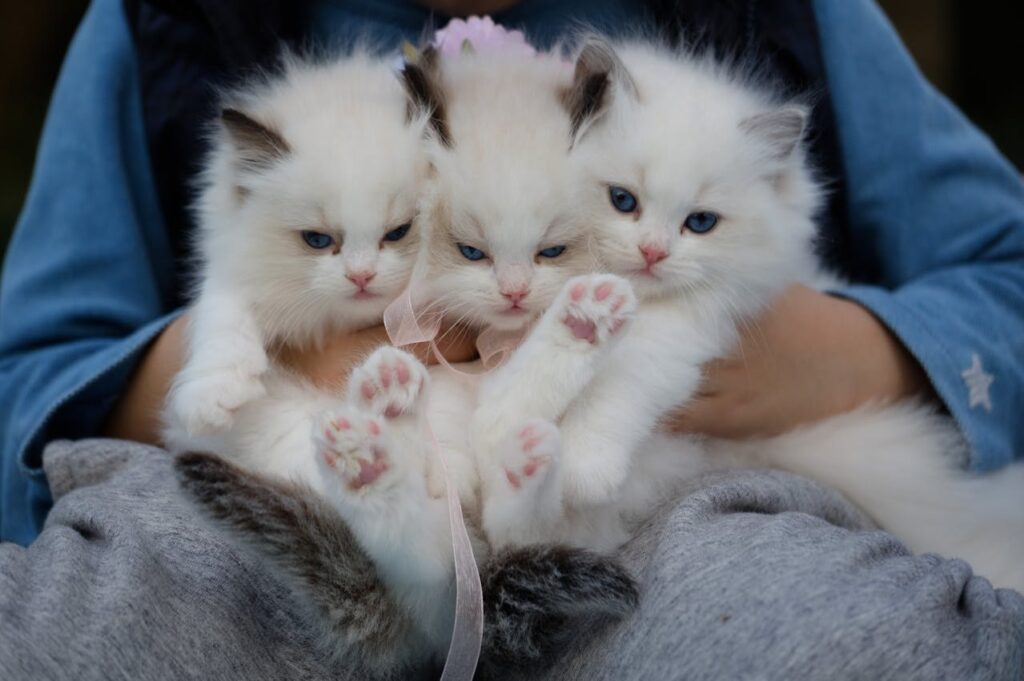
Choosing a pet is an exciting decision, but it’s important not to let emotions drive your choice. While it’s easy to fall in love with a cute face or a cuddly personality, remember that pets require long-term commitment, time, and care. Before making a decision, think about your lifestyle, living situation, and ability to provide for an animal’s needs. A pet should be a good match for your family, home, and routine to ensure a happy, healthy relationship for both you and your new furry friend. Taking the time to make a thoughtful, informed choice will lead to a stronger, more rewarding bond in the long run.
One more thing to keep in mind is Siamese cats are typically medium-sized, with a sleek, muscular build. They usually weigh between 5 to 10 pounds and have long, slender bodies.
Himalayan cats, on the other hand, are larger and more solidly built, with a rounded, stocky body. They typically weigh between 7 to 12 pounds, with some individuals reaching even higher weights due to their heavier bone structure.
In summary, Siamese cats are more slender and lightweight, while Himalayans tend to be bulkier and heavier. And that fur has to account for excessive weight or something too, am I right?
Conclusion
Both the Siamese and Himalayan cat breeds offer beauty, charm, and companionship, but they come with distinct differences. Whether you’re drawn to the Siamese’s social and playful nature or the Himalayan’s calm and luxurious appeal, understanding their temperaments, grooming needs, and health considerations will help you provide the best care possible. Whether you prefer the Siamese cat’s playful antics and constant chatter or the Himalayan’s serene and luxurious presence, each breed offers unique joys. By understanding their personalities, grooming requirements, and health considerations, you’ll be better equipped to choose the perfect feline companion. Which one speaks to your heart—the social butterfly or the calm cuddler? Let us know in the comments below!
